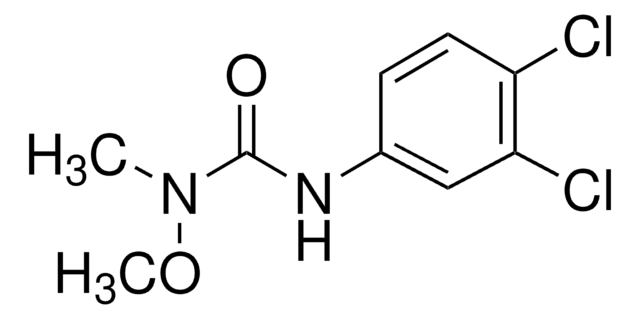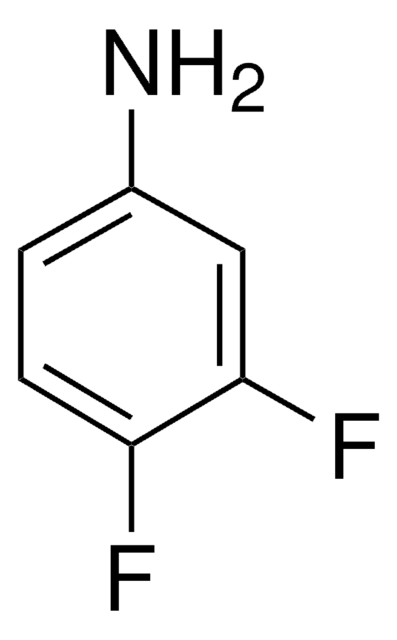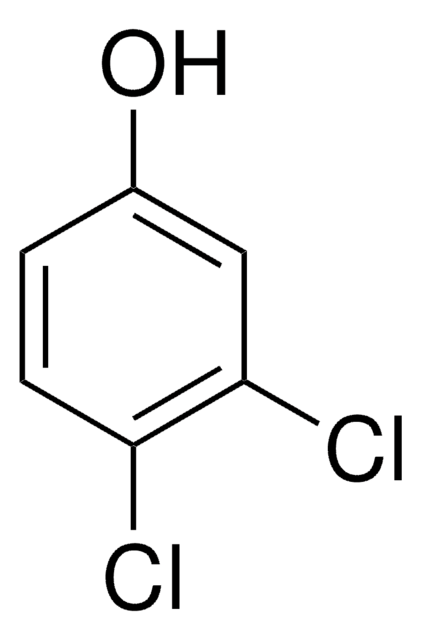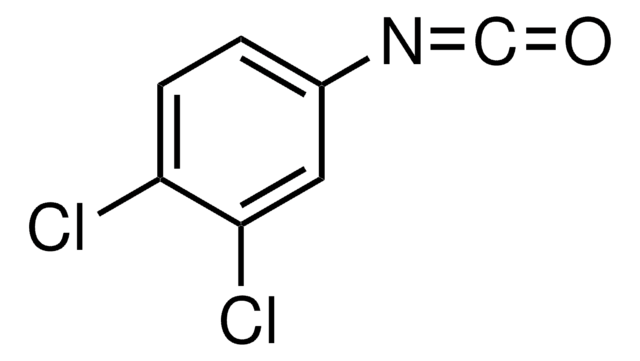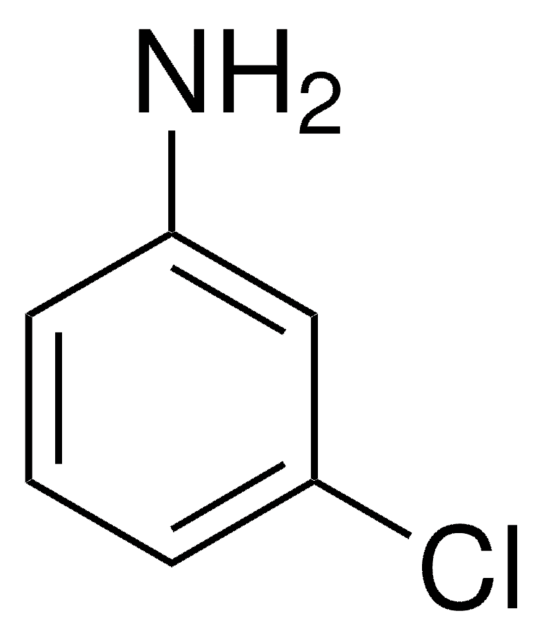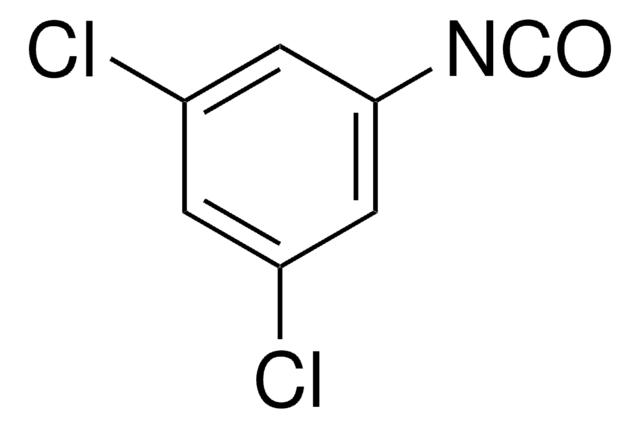437778
3,4-Dichloroaniline
98%
Sinónimos:
3,4-Dichlorobenzenamine, 3,4-Dichlorophenylamine, 4,5-Dichloroaniline, 4-Amino-1,2-dichlorobenzene, m,p-Dichloroaniline
About This Item
Productos recomendados
Análisis
98%
bp
272 °C (lit.)
mp
69-71 °C (lit.)
cadena SMILES
Nc1ccc(Cl)c(Cl)c1
InChI
1S/C6H5Cl2N/c7-5-2-1-4(9)3-6(5)8/h1-3H,9H2
Clave InChI
SDYWXFYBZPNOFX-UHFFFAOYSA-N
¿Está buscando productos similares? Visita Guía de comparación de productos
Categorías relacionadas
Descripción general
Aplicación
Palabra de señalización
Danger
Frases de peligro
Clasificaciones de peligro
Acute Tox. 3 Dermal - Acute Tox. 3 Inhalation - Acute Tox. 3 Oral - Aquatic Acute 1 - Aquatic Chronic 1 - Eye Dam. 1 - Skin Sens. 1
Código de clase de almacenamiento
6.1A - Combustible acute toxic Cat. 1 and 2 / very toxic hazardous materials
Clase de riesgo para el agua (WGK)
WGK 3
Punto de inflamabilidad (°F)
275.0 °F - closed cup
Punto de inflamabilidad (°C)
135.00 °C - closed cup
Equipo de protección personal
Eyeshields, Faceshields, Gloves, type P2 (EN 143) respirator cartridges
Certificados de análisis (COA)
Busque Certificados de análisis (COA) introduciendo el número de lote del producto. Los números de lote se encuentran en la etiqueta del producto después de las palabras «Lot» o «Batch»
¿Ya tiene este producto?
Encuentre la documentación para los productos que ha comprado recientemente en la Biblioteca de documentos.
Los clientes también vieron
Protocolos
GC Analysis of Anilines on Equity®-5
Nuestro equipo de científicos tiene experiencia en todas las áreas de investigación: Ciencias de la vida, Ciencia de los materiales, Síntesis química, Cromatografía, Analítica y muchas otras.
Póngase en contacto con el Servicio técnico









